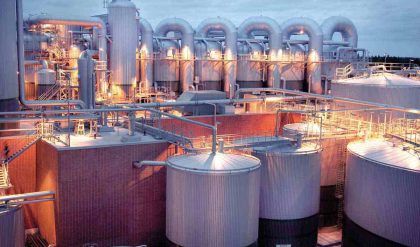Non Flow Processes
1. These are compression and expansion processes on gases in a cylinder with complete leak proofing. In these there is only energy transfer with zero mass transfer.
2. These non flow processes can be a constant pressure process, constant volume process, constant temperature process, reversible adiabatic process, poly-tropic process and constant internal energy process.
3. While heating at constant pressure
dU = δq—pdv ( note the use of δ and d in the equation). δ is used for heat supplied or rejected or work given out or work consumed by the system.
4. When heating at constant temperature , δq=δW since dU =0.
5. Heating at constant volume heating, δq = dU since δW =0
6. During a reversible adiabatic process, there is no friction and no heat is supplied or rejected, therefore δW = dU since δQ=0
7. During a polytropic process, δQ =δW –work lost in friction
8. A pure substance which is homogeneous in composition and homogeneous in chemical aggregates i.e. has same properties in all directions or at every point.
9. A pure substance state can be defined by two independent properties provided the system is in equilibrium and gravity, magnetic, electrical , motion and capillary(surface tension) effects are negligible.
10. The boundary of a non-flow process can be fixed, moving or imaginary.
11. When gravity, magnetic, electrical, motion and capillary effects are negligible, the total energy (E) is equal to the internal energy (U).
12. In an isobaric compression, heat is stored in the form of enthalpy.
13. During a isochoric (Constant volume) process, work done is zero and the total energy changes into internal energy.
14. Specific heat at constant volume is equal to the rate of change of specific internal energy with respect to temperature, C v = (∂u/∂T)v=C
15. Specific heat at constant pressure is equal to the rate of change of specific enthalpy with respect to temperature, C p = ∂h/dT
16. A process with no heat gain or heat loss is called an adiabatic process.
17. p V n = C is a mathematical form of a polytropic process in which no parameter is constant.
Flow Processes
1. Flow process is one in which there is energy as well as mass transfer across the boundary of the system. For example, flow from inlet of compressor to its outlet in a refrigeration system, flow across a nozzle and a flow across a turbine.
2. Flow process takes place in an open system.
3. Steady flow system in which properties do not change with respect to time.
4. Steady flow energy equation is a heat balance for the system.
5. Work done in an open system is n times the work done in a closed system.
6. All flow systems are OPEN systems since energy and work cross their boundaries.
7. When properties are constant with respect to time it is called a steady flow systems. All the experimental data is recorded under steady flow conditions.
8. When properties vary with respect to time it is called a non-steady flow systems. Nothing useful can be found under unsteady flow conditions.
9. Work done in a poly-tropic process in a steady flow system(open system) is n times the work done in a closed system i.e.
10. Work Done in a poly-tropic compression (closed system) =∫p dv =(p2v2–p1v1)/(n-1)
11. Work Done in a poly-tropic compression (Open system) =∫–v dp = n(p2v2–p1v1)/(n-1)

